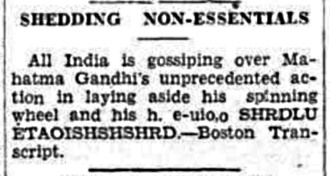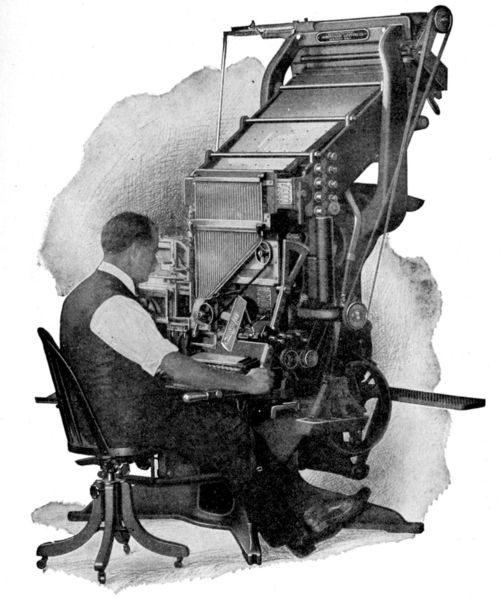I found this compelling article in the 18 June 1931 issue of The Beach (N.D.) Advance:
 It reads:
It reads:
SHEDDING NON-ESSENTIALS
All India is gossiping over Mahatma Gandhi’s unprecedented action in laying aside his spinning wheel and his h. e-uloo SHRDLU EATOISHSHSHRD.–Boston Transcript.
The article probably wasn’t run out of any newsman dedication to at least communicating part of the Gandhi spinning-wheel story. More than likely, it was a case of professional schadenfreude. Who would be so careless as to send out such a thing over the wires? Those Boston newspapermen are running a shoddy ship, it seems.
You might want to blame static or some other signal interruption as the cause of such confusion, but there’s a clue here to prove the gibberish has an entirely human source. You know the modern interface as the QWERTY keyboard — the reason we have to add QWERTY at the beginning is because then (and to a lesser extent now) people have devised other typing layouts for the sweet-spot of functionality, speed, and usability, so we name some keyboards by a pronounceable sequence of keys in order.
The top two lines of the Linotype keyboard are as follows: ETAOIN and SHRDLU . It would appear that the underpaid and underappreciated Bonston Linotypist messed up his text by hitting a few wrong keys — the “h. e-uio,o” part — and then signalled his failure by running his fingers down the keyboard to indicate the failed type. Having done the keys out of order, or through some other carelessness, the text went out on the wires nonetheless. What else is there to do when you’ve got a couple inches to fill and you’re just trying your best to run a ship-shape newspaper in far western North Dakota? Run a bit of somebody else’s failure, and then get on with your day — another paper is due in only a few hours.
